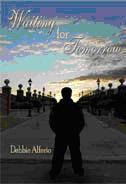Wednesday, February 27, 2013
Just The Facts
It's happened to all of us. You're engrossed in an awesome story and falling in love with the lead character; for all intents and purposes here, we'll call him Mitch. (hey, don't judge me--I have to get a plug in for my books when I can!) You learn early on that Mitch has beautiful, piercing blue eyes, the kind that grab you, hypnotize you, and pull you in for the kill. You can almost see them yourself, and are feeling it, too. A few chapters in, the author mesmerizes your senses even more with a scene where our sweet hero is engaged in a loving moment with his wife, and she descibes the way Mike's hazel eyes sparkle when he smiles.
Hey, wait a minute. Did you say "hazel"? Weren't they blue a few chapters ago? And who the heck is Mike??
As the reader, you stop and wonder what in the world happened. Did poor Mitch have an eye transplant the author neglected to mention, and his donor's eyes were hazel? Did he decide to get colored contact lenses? Did he enter the Witness Protection Program and change his name? Did you read it wrong the first time? You double-check. Nope, you were right. They were blue, and he was Mitch. The author goofed up.
Inconsistencies in writing are actually more common than we authors would like to think, and they are something that can easily be avoided. We sometimes get so caught up in telling the story that we neglect to pay attention to the details. Perhaps you wouldn't do anything so drastic as what I cited in my example, but similar mistakes can definitely happen. It can be something as simple as the way a character spells his name, what kind of car he drives, or his favorite color. Series writers like myself have to be even more careful about using the same details in each installment. How do you avoid inconsistencies? The best way is to make notes of the details you feel are most important so you have something to refer to if the muse gets jumbled. Also, should you decide at any point during your writing to change one of the details--a character's name, for example--be sure to comb through all parts of your manuscript to make sure it is changed throughout. Ask your editor to be on the lookout for inconsistencies as well--don't let them get into print! (I accidentally had this happen--I had the wrong character refer to his wife, Cindy--and he isn't married!)
Paying attention to detail is crucial to avoiding inconsistencies that can cause your writing to appear unprofessional and unpolished. Do you have other tips you can share? Let me know in the comments. Happy writing!
Thursday, February 7, 2013
I Get So Emotional

As writers, it's our job to show our readers how our characters are feeling. Like real people, our characters will most likely experience a myriad of different emotions based on factors such as their circumstances, surroundings, or interactions with others. Unlike real people, our characters can't express those emotions without our help. So, how do we do it?
A key point that we need to remember is that human beings express emotion in both verbal and non-verbal ways. You can often determine one's emotional state simply by observing factors such as speech pattern, facial expression, and body language. There are often physical and psychological changes that take place as well. In order to properly convey the feelings of the character, a writer must take all these factors into consideration. A good place to start is to think about the scene and what emotion the character is experiencing. How does one express that particular feeling? For example, if he is angry, his face may turn red, he may narrow his gaze, grit his teeth, or set his jaw. Breathing may become rapid, he may sweat, or tense his muscles. The character may yell, speak with an edgy voice, or even say nothing at all. No matter what, however, more than one factor will take place to express the emotion. Keep in mind, too, that not everyone expresses emotion in the same way. One angry person may scream and throw a tantrum; another may sit quietly and sulk. Be sure that your character's expression is as unique to him as it would be if he were a real human being. Your readers will quickly lose interest in "cookie-cutter" characters.
When creating an emotional scene, a writer also needs to remember that "less is more." You absolutely want the reader to "get into" your character and know how he is thinking and feeling, but you don't want to slow down the pace of the story by using twenty pages to do it! Do your best to avoid long, drawn-out emotional scenes that don't keep the pages turning. Using strong indicators like body language that the reader can interpret and dialogue or interaction with other characters can help with this. Injecting emotion into narrative is fine, but, again, be careful not to overdo. If the writing is strong, the reader will "get the message" right away, and you will keep his/her interest in the rest of the story.
Remember that well-rounded characters make for well-rounded stories that will keep your readers engaged and coming back for more. Happy writing!
For more info on how to show emotion in your characters, check out "The EMOTION Thesaurus: A Writer's Guide to Character Expression" by Angela Ackerman and Becca Puglisi.
Photo courtesy of Dreamstime
Subscribe to:
Comments (Atom)

